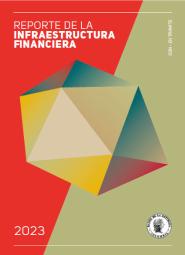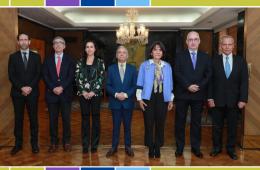A New Cultural Center to Preserve and Promote the Culture of the Archipelago of San Andrés, Providencia, and Santa Catalina
CULTURAL SERVICES
Banco de la República opens its new Cultural Center to the community of San Andres, Providencia, and Santa Catalina. Its services and products are the result of joint work among professionals from the Central Bank, local researchers, and the community of the island.
This center offers a variety of cultural services and makes available to the public its patrimonial archive and specialized collections which account for the context and the geographical, historical, social and cultural diversity of the Archipelago. Through its activities, it will foster dialogs among the sources of traditional knowledge and will become a meeting point for the inhabitants of the region.
A Sea of Books and a Place for All
The new Cultural Center has close to 21,000 books, up-to-date in all fields of knowledge, as well as movies and games. This bibliographic corpus includes two specialized collections: one composed by publications on the Archipelago, and the special collection on the circuits of the Caribbean, which illustrates its relationship with other countries over time, providing a historical and regional context to some of the most important features of the culture in the Islands.
Users will have access to more than 2,500,000 titles, electronic databases, and digital collections available through the catalog of Banco de la República's library network. Affiliates may borrow books, CDs and DVDs for external use.
The Cultural Center is equipped with all reader devices (intelligent reading machines for the visually impaired). It also has a multiple-use room for 120 people, which will host concerts, exhibitions, and lectures, and a terrace for outdoor activities.
Children will be able to access more than 5,000 bibliographic titles, games, and movies. The Center has spacious and cozy rooms specially designed for the younger audience: the Children's Room and the Games and Workshops room. Their purpose is to encourage children from an early age to include reading and cultural activities as an alternative of learning and of life.
Researchers will be able to access patrimonial archives of the Islands, as well as to contact other researchers, libraries and study centers in the Caribbean to exchange experiences and knowledge. The community of the Islands will have access to lectures and debates on current issues, and meetings to preserve their memory and local knowledge.
Tourists will be able to access information on the Archipelago and its culture, with recommendations on historical sites, traditions and places to enjoy, in addition to activities that will enable them to deepen in particular aspects of the culture of the Islands.
The Center of Oral Memories
The Center for Oral Memories is a novelty. The project was launched in 2015 seeking to collect, preserve and disseminate the memory and oral tradition of the different communities that inhabit the insular territory. These memories are an invaluable heritage of a region where customs, knowledge and experiences mainly circulate by word of mouth, in the form of stories, songs, testimonies, narratives, bodily expressions, and daily practices. The Center currently holds fifty recordings; also, a Creative Room has been prepared with audio recording equipment, in which users can record and edit their memories.
A Look at Memory
The new Cultural Center has archives and collections of significant patrimonial value for the Islands, which can be consulted physically and digitally. Among others:
- The collection of historical photography includes images of San Andres and Providencia since the 1930s until 1990.
- The Audiovisual Archive of the program The Raizal, People & Culture, by director and producer Fidel Antonio Corpus Suarez, offers a testimony of the daily life of the Raizal people. It contains more than 760 hours of film in Spanish, English and Creole registering parties, celebrations, sports activities, and religious ceremonies of the Archipelago.
- A collection of underwater pictures of fish, coral formations, and reefs of the cays surrounding the Islands, with relevant information, taken by Jorge Sanchez Berrío.
- The digital archive of the MangleRojo research group puts together environmental and Afro-Caribbean studies, the culture of the Islands, Maritime culture, the intangible cultural heritage, visual anthropology, and musical, singing and dancing traditions.
- The archive of interviews titled Native Islanders conducted by researcher Claudia Leipold between 1994 and 1995, containing more than nine hundred minutes of audio that collect the testimonies of some of the most important characters of the Islands.
On the occasion of this inauguration, five projects which are the outcome of joint work with the community will be published:
- Some traditional medicinal plants and their popular uses in the islands of Providencia and Santa Catalina.
- Anansi stories of Old Providence.
- An illustrated Cultural Map.
- Musical instruments.
- Hablemos sobre el mar / Mek wi taak bout di sii.
THE BUILDING
The new Cultural Center is located in a building with demanding architectural, technical and functional parameters, which consider the climatic conditions of the island and the efficient use of natural resources.
Its design incorporates traditional elements of the architecture at the Islands such as its wooden facade, windows, and blinds which allows the wind to flow continuously through the building while connecting it visually to the outdoors. The building has a system of solar panels for energy generation, a treatment plant for rain water, and green surfaces on its rooftop which contribute to temperature control. These elements optimize water and energy consumption. Also, to meet mobility needs, the building has an elevator and a ramp to access the Cultural Center.
The area of the building is 3,400 sq. m., distributed as follows:
- First floor: Multipurpose Room: 120 users, Creative Room: 20 users.
- Second floor: Children's Room: 60 users, Games and Workshops Room: 20 users.
- Third floor and mezzanine: Reading Room: 130 users.




















































